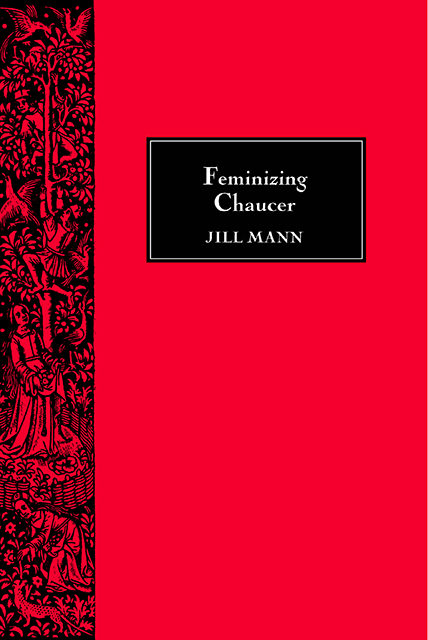Book contents
- Frontmatter
- Contents
- Dedication
- Preface to the 2002 Edition
- Preface
- Abbreviations
- Introduction
- 1 Women and Betrayal
- 2 Antifeminism
- 3 The Surrender of Maistrye
- 4 Suffering Woman, Suffering God
- 5 The Feminized Hero
- Conclusion
- Excursus: Wife-Swapping in Medieval Literature
- Chaucer Studies
- Bibliography
- Index
3 - The Surrender of Maistrye
Published online by Cambridge University Press: 17 March 2023
- Frontmatter
- Contents
- Dedication
- Preface to the 2002 Edition
- Preface
- Abbreviations
- Introduction
- 1 Women and Betrayal
- 2 Antifeminism
- 3 The Surrender of Maistrye
- 4 Suffering Woman, Suffering God
- 5 The Feminized Hero
- Conclusion
- Excursus: Wife-Swapping in Medieval Literature
- Chaucer Studies
- Bibliography
- Index
Summary
Love is a thyng as any spirit free.
Wommen, of kynde, desiren libertee,
And nat to been constreyned as a thral;
And so doon men, if I sooth seyen shal.
(Franklin's Tale 767–70)The tale that the Wife of Bath goes on to tell repeats on a larger scale the pattern of surrender and reconciliation which is traced in miniature form at the end of her Prologue. It begins with a manifestation of masculine ‘maistrye’ in its ugliest form: the knight's casual rape of a young girl. It ends with the rapist's humble surrender of ‘maistrye’ to the old wife who has been inflicted on him as punishment:
‘Thanne have I gete of yow maistrie,’ quod she,
‘Syn I may chese and governe as me lest?’
‘Ye, certes, wyf,’ quod he, ‘I holde it best.’ (1236–8)
This time, male surrender leads not only to marital peace and harmony, but also to the magical transformation of the ugly old hag into a beautiful young wife. Miraculous as it is, this transformation is no whit more miraculous than the transformation of a rapist into a meekly submissive husband; the magical change in the woman is merely the external projection of this even more magical change in the man.
The transformation of the rapist into an obedient husband is something that can only be told as fairy-tale (unless, as with Pluto and Proserpina, it is told with a comedy that likewise places it beyond the reach of serious representationalism). That is to say, the tale is not to be interpreted in realistic terms as a serious proposal for the rehabilitation of sexual offenders; rather it is (like all good fairy-tales) the imaginative embodiment of aspirations towards a transfigured reality, a vision of the way things might be. It addresses itself not to the pathology of rape, but to the imaginative representation of the processes which male psychology (in its social rather than individual form) would have to undergo to purge itself of the drive towards ‘oppressioun’ (889). It moves beyond the stories of rape in the Legend of Good Women by widening its vision beyond the horror of the crime to ask in what way men would have to change for rape to cease to exist.
- Type
- Chapter
- Information
- Feminizing Chaucer , pp. 70 - 99Publisher: Boydell & BrewerPrint publication year: 2002
- 1
- Cited by

